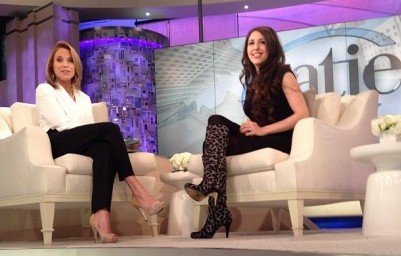How To Have An Eco-Friendly Diet
So you want to have an eco-friendly diet. Let me tell you: I was the biggest carnivore you’ll ever meet. I was the girl who would go for steaks with the guys when all of the girls were eating salads and being pristine about their diet. And then I had my “ah ha” moment. I went to a factory farm, I read, I spoke to experts, and I did my due diligence. I found out that 18% of greenhouse gases are from factory farms; it’s an irrefutable science that you cannot be an eco-friendly carnivore.
I want you to know the huge impact that factory farming and farming animals in general makes on our world globally. We’re talking about all this land, yes. Then there’s the deep statistics like: the average American eats 270 lbs. of meat per year. And one-third of all available land used worldwide is used for cattle. And if you think about it, these cattle are eating grain, grain that could be used to feed the world’s poor. This is a serious issue, and it all correlates back to world hunger.
You know, if we all stopped eating meat we could feed the world hunger two times over with grain that we’re using to feed this cattle. And these cattle, remember how much space they’re taking up. They’re double the size, triple the size of me or you, and really they’re using our resources. They’re polluting our waterways, which means they’re polluting our water supply. 10 billion animals killed a year, there’s just no way we’re going to meet our climate change goal if we continue on this path.
There’s a better way, and it’s plant-based. It’s really simple to try a plant-based diet, and it’s really simple to choose local. Local is as green as it gets. If there’s a mom and pop shop that makes their own granola, that’s optimal sustainable living right there. You just want to think locally. If there’s a guy next door who has blueberries on his porch, trade for something that you have. I mean this is true green living at its best – getting back to basics. You want to try for local foods, sustainable foods, foods that are in season. Are you going to eat, you know, watermelon in the middle of November? That’s not green. That’s flying thousands and thousands of miles to get to your plate. You want to think about things that are in season. If it’s winter time, you want to say, “What am I going eat? I’m going to eat rhubarb. I’m going to eat swiss chard.” These are vegetables that are great for winter time. Oh, it’s summer; it’s a great time to buy berries and melons. You really want to think in season. This actually will save you a lot of money as well.
Your green diet will also save you a lot of money when you choose to buy bulk. Beans, rice, quinoa, all these staples of the traditional American and European diets, as well as things like nuts. These are all available in fantastic bulk bins where you can bring your own bag, or you can bring your mason jars. It costs next to nothing, pennies, rather than buying in the traditional single-use packages, or the slightly smaller packages, which God only knows what’s inside. My family made the switch from traditional canned beans, and it was an amazing difference in money because the traditional beans, first of all, there’s only one brand of beans that doesn’t have BPA in the cans. Only one. So unless you’re buying that one, you’re leaking a lot of icky stuff into your kids’ food and into your own food. It’s a much better choice to soak and make your own beans. And you really get used to it, I promise. Beans are the kinds of things that once you make them they can go in every single meal: dips, main courses. You can turn them into anything.

Here’s something I bet you didn’t know. Did you know that coffee is the second most valuable commodity after oil? That’s right. And, unfortunately, a lot of the conditions where these plants, where chocolate and coffee beans are being produced, there are full blown slavery situations going on, including child slavery. You must choose fair trade when buying coffee and chocolate. And an easy way to get around this – if you’re confused – is to just simply buy it at your natural foods market, or use a local roaster who you know has had his bean source from somewhere reliable.
Keep it simple – act sustainably and be community-minded. Most of the time – what makes sense – these getting-back-to-basic things are the things that keep us the greenest in the long run.
Wardrobe by Claire Farewell London , Accessories by Adina Mills Designhouse, Hair & Make Up by GlamSquad.
Chloé Jo Davis is the Founder of GirlieGirlArmy.com (“Your Glamazon Guide to Green Living”) and the host of About.com’s Green Living Series, as well as a media spokesperson on eco-living and plant-based parenting.
Originally published on About.com


